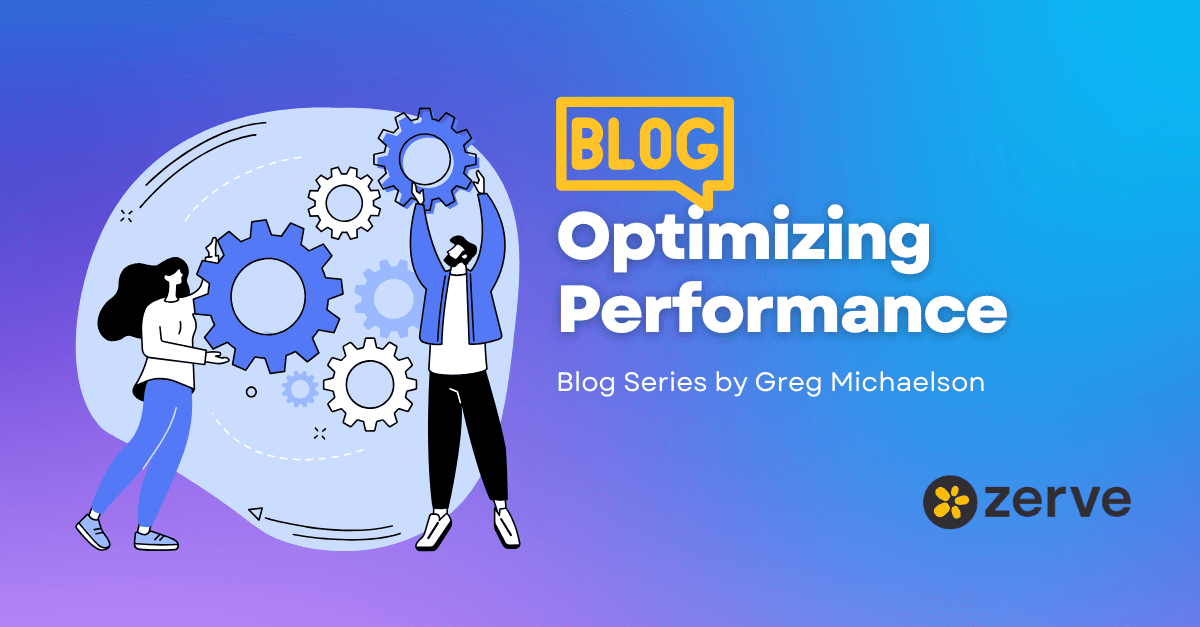
Optimizing Performance: A Hands-On Guide to Hyperparameter Tuning
When it comes to learning data science or learning AI, one of the most impactful techniques for improving model performance is hyperparameter tuning. Hyperparameters are the configuration settings that control the training process of a model but are not updated during training itself. These include values like the number of trees in a random forest, the learning rate for gradient boosting, or the k value in k-nearest neighbors.
As an experienced data scientist, I have seen how proper hyperparameter tuning can transform a decent model into a highly effective one. In this guide, we dive into the technical aspects of hyperparameter tuning, explore best practices, and examine its real world applications, including examples from industries like banking.
The Importance of Hyperparameter Tuning
Hyperparameter tuning is essential because it directly impacts a model’s ability to generalize to unseen data. While supervised learning algorithms can learn patterns from labeled data, the wrong hyperparameters can lead to issues like overfitting or underfitting. Unsupervised learning models, such as clustering algorithms, also benefit significantly from tuning parameters like the number of clusters (k) or initialization methods.
Common Hyperparameter Tuning Strategies
Several methods are available for hyperparameter tuning, each with strengths and trade offs.
Grid Search
Grid search exhaustively tries all combinations of specified hyperparameters to find the best configuration. While thorough, it can be computationally expensive.
### Example Code
from sklearn.ensemble import RandomForestClassifier
from sklearn.model_selection import GridSearchCV
# Example dataset
from sklearn.datasets import load_iris
data = load_iris()
X, y = data.data, data.target
# Define the model and hyperparameter grid
model = RandomForestClassifier(random_state=42)
param_grid = {
'n_estimators': [10, 50, 100],
'max_depth': [None, 10, 20],
'min_samples_split': [2, 5, 10]
}
# Perform grid search
grid_search = GridSearchCV(estimator=model, param_grid=param_grid, cv=5, scoring='accuracy')
grid_search.fit(X, y)
# Output the best parameters and score
print(f"Best Parameters: {grid_search.best_params_}")
print(f"Best Accuracy: {grid_search.best_score_:.2f}")In this example, the grid search evaluates various combinations of tree counts, depths, and splitting criteria for a random forest classifier to select the best settings.
Random Search
Random search samples random combinations of hyperparameters and is faster for large parameter spaces.
### Example Code
from sklearn.model_selection import RandomizedSearchCV
from scipy.stats import randint
# Define the hyperparameter space
param_dist = {
'n_estimators': randint(10, 200),
'max_depth': [None] + list(range(5, 20)),
'min_samples_split': randint(2, 20)
}
# Perform random search
random_search = RandomizedSearchCV(estimator=model, param_distributions=param_dist,
n_iter=50, cv=5, scoring='accuracy', random_state=42)
random_search.fit(X, y)
# Output the best parameters and score
print(f"Best Parameters: {random_search.best_params_}")
print(f"Best Accuracy: {random_search.best_score_:.2f}")Random search is useful when the parameter space is large or when computational resources are limited.
Bayesian Optimization
Bayesian optimization uses probabilistic models to explore the hyperparameter space intelligently, balancing exploration and exploitation. Tools like Optuna or Scikit Optimize are effective for large and complex spaces such as neural networks.
Below is an example using Optuna to tune a LightGBM model for a regression task.
# Installation
# pip install optuna lightgbm plotly
import optuna
from optuna import Trial, visualization
from optuna.samplers import TPESampler
from optuna.pruners import MedianPruner
import lightgbm as lgb
from sklearn.model_selection import train_test_split
from sklearn.metrics import mean_squared_error
import joblib
import os
# Demo data (replace with your own)
from sklearn.datasets import make_regression
X, y = make_regression(n_samples=2000, n_features=20, noise=0.1, random_state=42)
X_train, X_valid, y_train, y_valid = train_test_split(X, y, test_size=0.2, random_state=42)
train_dataset = lgb.Dataset(X_train, label=y_train)
valid_dataset = lgb.Dataset(X_valid, label=y_valid, reference=train_dataset)
def objective(trial: Trial):
boosting_type = trial.suggest_categorical("boosting_type", ["gbdt", "dart"])
num_leaves = trial.suggest_int("num_leaves", 31, 256)
max_depth = trial.suggest_int("max_depth", -1, 20)
learning_rate = trial.suggest_float("learning_rate", 1e-4, 0.3, log=True)
# Conditional param
if boosting_type == "dart":
drop_rate = trial.suggest_float("drop_rate", 0.0, 0.5)
else:
drop_rate = 0.0
# Conditional range based on learning rate
if learning_rate < 0.01:
n_estimators = trial.suggest_int("n_estimators", 1000, 5000)
else:
n_estimators = trial.suggest_int("n_estimators", 100, 1000)
reg_alpha = trial.suggest_float("reg_alpha", 1e-8, 10.0, log=True)
reg_lambda = trial.suggest_float("reg_lambda", 1e-8, 10.0, log=True)
min_child_samples = trial.suggest_int("min_child_samples", 5, 100)
colsample_bytree = trial.suggest_float("colsample_bytree", 0.4, 1.0)
subsample = trial.suggest_float("subsample", 0.4, 1.0)
params = {
"objective": "regression",
"metric": "rmse",
"boosting_type": boosting_type,
"num_leaves": num_leaves,
"max_depth": max_depth,
"learning_rate": learning_rate,
"drop_rate": drop_rate,
"n_estimators": n_estimators,
"reg_alpha": reg_alpha,
"reg_lambda": reg_lambda,
"min_child_samples": min_child_samples,
"colsample_bytree": colsample_bytree,
"subsample": subsample,
"verbose": -1,
"seed": 42
}
pruning_callback = optuna.integration.LightGBMPruningCallback(trial, "rmse")
model = lgb.train(
params,
train_dataset,
valid_sets=[valid_dataset],
valid_names=["valid"],
early_stopping_rounds=100,
callbacks=[pruning_callback],
)
y_pred = model.predict(X_valid)
rmse = mean_squared_error(y_valid, y_pred, squared=False)
return rmse
def save_study_callback(study: optuna.Study, trial: optuna.Trial):
os.makedirs("optuna_study", exist_ok=True)
joblib.dump(study, os.path.join("optuna_study", "study.pkl"))
sampler = TPESampler(seed=42)
pruner = MedianPruner(n_startup_trials=5, n_warmup_steps=5)
study = optuna.create_study(direction="minimize", sampler=sampler, pruner=pruner,
study_name="lgbm_regression_study")
study.optimize(objective, n_trials=50, callbacks=[save_study_callback], show_progress_bar=True)
print("Number of finished trials:", len(study.trials))
best = study.best_trial
print("Best value (RMSE):", best.value)
print("Best params:")
for k, v in best.params.items():
print(f" {k}: {v}")
# Optional visualizations
try:
visualization.plot_param_importances(study).show()
visualization.plot_optimization_history(study).show()
visualization.plot_slice(study).show()
visualization.plot_parallel_coordinate(study).show()
except Exception:
print("Install plotly for Optuna visualizations.")What This Example Demonstrates
Defining a search space with conditional parameters
Pruning unpromising trials to save time
Using TPESampler for efficient Bayesian optimization
Saving study progress with callbacks
Visualizing search results and parameter importance
Notes
Replace synthetic data with your real dataset
Adjust parameter ranges based on domain knowledge
Increase
n_trialsfor more thorough searchesLog results for reproducibility and auditability
Hyperparameter Tuning in Banking
In banking, hyperparameter tuning is indispensable for credit scoring, fraud detection, and customer segmentation.
Example: optimizing a gradient boosting model for credit risk assessment.
from sklearn.ensemble import GradientBoostingClassifier
from sklearn.model_selection import GridSearchCV
model = GradientBoostingClassifier(random_state=42)
param_grid = {
'learning_rate': [0.01, 0.1, 0.2],
'n_estimators': [100, 200, 300],
'max_depth': [3, 5, 7]
}
grid_search = GridSearchCV(estimator=model, param_grid=param_grid, cv=5, scoring='roc_auc')
grid_search.fit(X, y)
print(f"Best Parameters: {grid_search.best_params_}")
print(f"Best ROC AUC: {grid_search.best_score_:.2f}")Careful tuning boosts model performance, improves risk prediction, and reduces losses.
Best Practices for Hyperparameter Tuning
Start simple with defaults on a subset of data
Prioritize impactful parameters such as learning rate and model capacity
Automate searches with GridSearchCV, RandomizedSearchCV, or Optuna
Pair tuning with cross validation for robust estimates
Use domain knowledge to constrain ranges and guide choices
Final thoughts
Hyperparameter tuning is a vital skill for data science best practices. By applying grid search, random search, and Bayesian optimization, you unlock more accurate and reliable models. Combine tuning with validation and sound domain knowledge to deliver solutions stakeholders can trust. Ready to master this skill and accelerate your work? Try Zerve and scale experiments faster.
FAQs
What is hyperparameter tuning?
It is the process of selecting configuration settings that control model training to improve performance on unseen data.
When should I use grid search vs random search?
Use grid search for small spaces when you want exhaustive coverage. Use random search for larger spaces to find good regions quickly.
What advantages does Bayesian optimization offer?
It explores the space intelligently with probabilistic models, often reaching strong results with fewer evaluations.
How do I avoid overfitting during tuning?
Use cross validation, keep a holdout set, and monitor generalization metrics such as ROC AUC or RMSE on validation data.
Which metrics should I optimize?
Choose metrics aligned with business goals. For imbalance, consider ROC AUC, PR AUC, F1, or cost-sensitive metrics.
How can Zerve help with hyperparameter tuning?
Zerve orchestrates experiments, parallelizes runs, tracks metrics and artifacts, and lets teams scale tuning without extra infrastructure.
